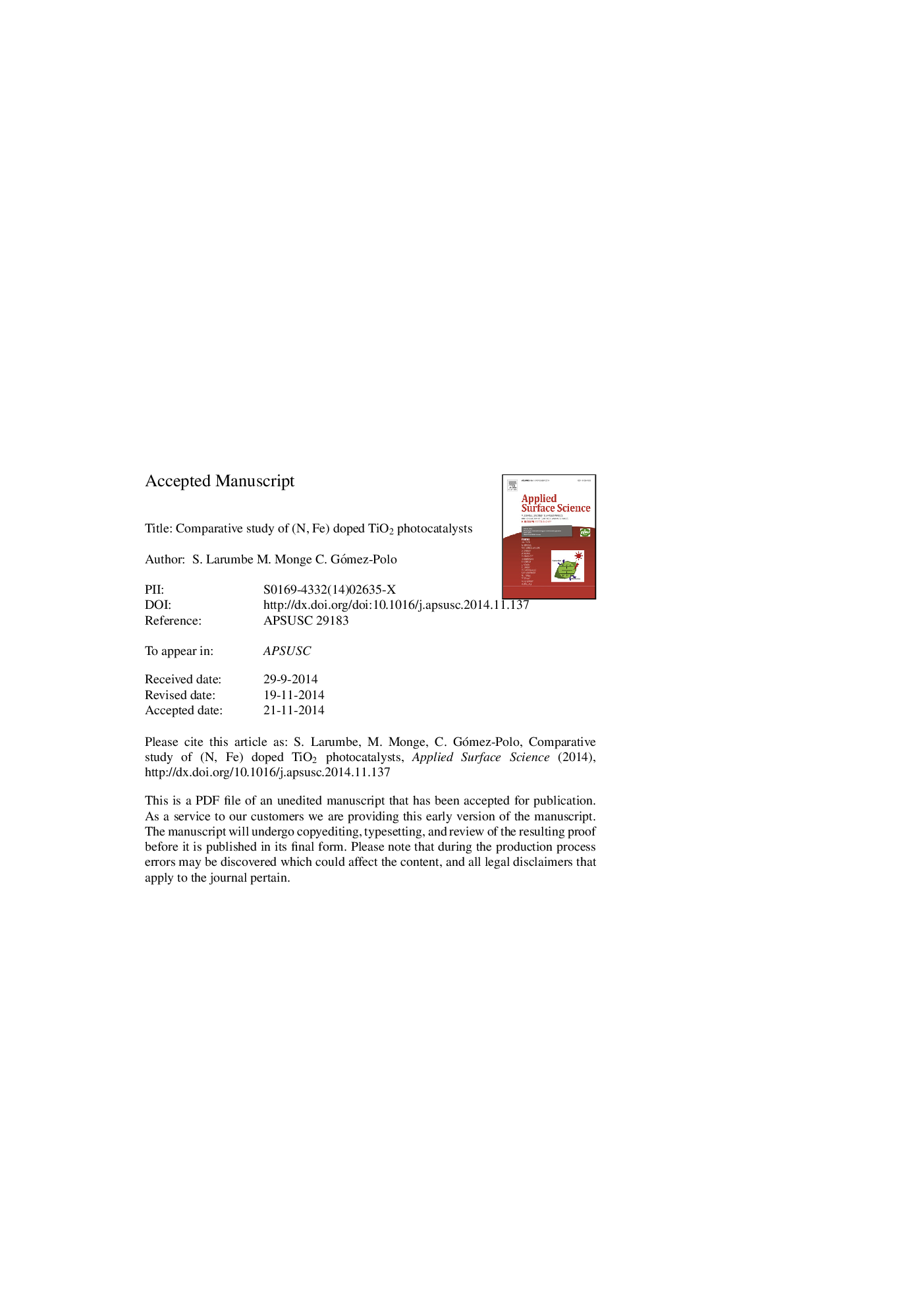| Article ID | Journal | Published Year | Pages | File Type |
|---|---|---|---|---|
| 5357622 | Applied Surface Science | 2015 | 33 Pages |
Abstract
The effect of N and Fe doping on the structural, optical, photocatalytic and magnetic properties of TiO2 nanoparticles is analyzed. Undoped, N and Fe doped TiO2 nanoparticles were synthesized by sol-gel method. Titanium tetraisopropoxide (TTIP) was used as the alkoxyde precursor and iron (III) nitrate and urea were the employed precursors to obtain Fe and N doped TiO2 nanoparticles, respectively. Differential Scanning Calorimetry (DSC) and Thermogravimetrical Analysis (TGA) enabled the analysis of the thermal decomposition process and the final calcination temperature. X-Ray Diffraction patterns of the calcined nanoparticles displayed a monophasic anatase structure in all the samples with mean crystallite diameter around 4-6Â nm. The introduction of Fe or N induced a red-shift in the absorption spectra. Such a red-shift is characterized by a decrease in the band-gap energy and the occurrence of an absorption (Urbach) tail in the visible region. Finally, the photocatalytic efficiency was evaluated under UV and Visible light, obtaining an improvement of the kinetic constants in the nitrogen doped TiO2 nanoparticles with respect to undoped and Fe doped TiO2. The differences in the photocatalytic response under Fe and N doping are also analyzed in terms of the magnetic response of the analyzed photocatalysts.
Related Topics
Physical Sciences and Engineering
Chemistry
Physical and Theoretical Chemistry
Authors
S. Larumbe, M. Monge, C. Gómez-Polo,
